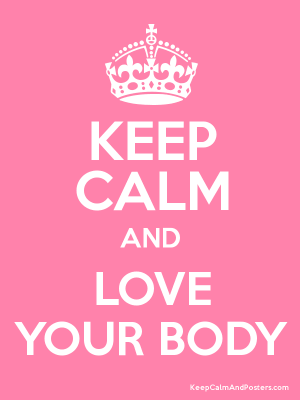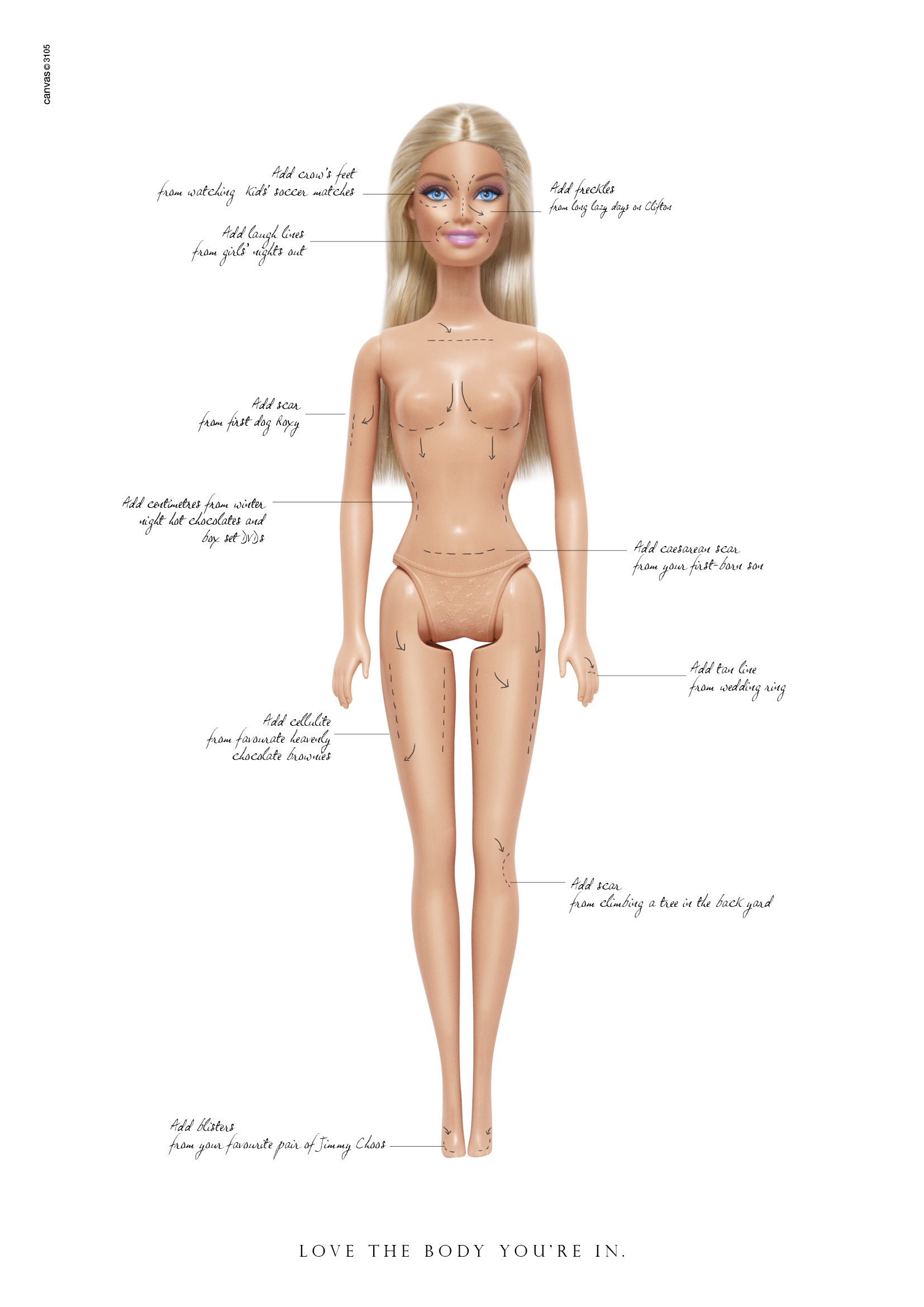I hate my body…how to go from judging to loving

So this is a big one fellow Heroes…
We all know the unbalanced state of body image in modern society, and the growing counter-commentary around body abuse, self-deprecation and dismorphic disorders, which are now even seeing major campaigns from big companies like Dove and MarieClaire. As global as it is personally, I have watched at least two dozen of my close friends struggle with body image issues. It is an issue that hits home and hits deep with most people.
But the issue goes deeper than just image–it also extends to a general discomfort with being in our physical bodies; with staying in contact with the actual felt experience our physical existence. So much time and energy is spent in numbing out and disconnecting from our bodies in order to escape suffering, yet in the end this very strategy causes the greatest suffering.
My immediate aim with this article is not to heal your physical body (we have other articles for that), but to heal your relationship to your physical body–whatever its shape and size. My own life lessons have shown me that true and sustainable fitness and wellness are sourced from a mind that is connected to, appreciates and honors its body.
The Science of Gratitude
The core of the ‘judging to loving’ practice in this post is the conscious development of gratitude for/appreciation of the physical body. This ‘Attitude of Gratitude’ effect has become the focus much scientific research, and the results are astounding.
If you are interested in exploring more of the quantitative research around positive psychology, happiness, gratitude and the effects it has on the body, I have included some further resources for you. But here’s the distilled essence:
Psychologists have scientifically proven that one of the greatest overall factors to happiness in your life is how much gratitude you show.’ -SoulPancake
Further Resources
• Gratitude in the Face of Socially Challenging/Costly Situations: A Scientific Study
• Gratitude Research and Practice
• A Collection of Scientific Research on Gratitude
• A Collection of Scientific Statements on the ‘Attitude of Gratitude’
• The Science and Practice of Gratitude
• An Empirical Psychological Study on Happiness
And two of my favorite sources of modern amazingness:
• SoulPancake video on Gratitude
• Awakening Joy–A Mindfulness Course Devoted to Gratitude and Happiness
Hate is a Strong Word
Now I recognize that you may not ‘hate’ your body–a word that is too strong to be accurate for you. This article and practice is written with a much broader audience in mind, and includes those that:
• Feel a bit ‘out of body’ or not so naturally comfortable in their skin and want to feel more physically at ease
• Have an illness, health complication or other unique body circumstance that they want to come to peace with
• Want to have more immediate access to the energy of gratitude in their daily life
• Are going through an intense physical change like pregnancy, menses, puberty or recovery from a serious illness or injury
• Want to create a meditation/prayer practice that is centered on the body
• Want to have more access to body-based intuition and ‘gut feelings’
• Simply want to feel happier (studies suggest up to 25% more happy!)
• Love their body and want to love it even more
• And of course for those that struggle with their relationship to their body (body image, eating issues, gender identity) and thus feel at odds with their body

From Judging to Loving
Follow the step-by-step exercise below to start creating a lasting shift in your relationship to your physical body, by shifting:
1. What you focus on with your physical body
2. How you focus on it–the stories and meaning your project onto it
3. How your physical body is either burdensome or empowering
Set the stage
• Start by creating a safe, uninterrupted space and time–at least 10 minutes. Create this supportive space by soft lightening (especially helpful if you are still getting comfortable with putting a lot of attention on your own body in this way), and background music that supports the feeling of gratitude (whatever inspires feelings of gratitude and appreciation…experiment to find styles and songs that work for you).
The Practice
1. Start with movement to get into your body. Take 30 seconds to a minute to simply breath, stretch, move, release tension and stimulate physical energy. Be gentle, patient and conscious.
2. Once the physical body has warmed up a bit, begin the actual gratitude practice. Do this by:
• Focusing on 3 to 5 places that are most obvious and easy to notice and appreciate, such as: working senses (eyes, ears, etc.), your functioning brain, your easeful breathing, your working heart, etc. Each person is unique, so take time to find these first 3-5 focuses.
• As you hold each focus, you can deepen the practice by saying (out loud or internally), ‘Thank you for the job you do; I appreciate you; I love you’. At first, the words may feel emotionless or even wrong–this is natural when we are transforming a deeply engrained pattern. Just keep it up–’fake it till you make it’ is a great technique when it comes to Neuro-Plascticity.
3. At this point you have warmed-up your emotional ability by focusing on 3-5 of the most easy and obvious areas of body gratitude. From here, begin the deeper practice:
• Move through the body systematically (you can use an image/map of the body at first), taking time to focus on, then decide to appreciate each area of the body. This means even parts of your body that your ego has judgments about. Again, at first these appreciations may feel hollow or even very difficult–just keep at it, like building a muscle at the gym.
• Appreciate using touch, words, movement, visions, emotions…whatever works best for you.
• Saying ‘Thank you for the job you do; I appreciate you; I love you’
• Finishing with appreciation for one part of the body, move on to step 4.
4. Once you make contact with a part of your body and appreciate it, take time to really feel that part of the body.
• How does it feel? What do you notice? You may notice previously unrecognized positive sensations; you may notice discomfort or pain that you don’t like to acknowledge. Whatever is there, appreciate it as useful information that can be used to deepen your health and enjoyment of life.
• As you deepen this part of the practice, you may notice that the part of the body you are focusing on has ‘unexpressed energy’–basically a feeling of ‘I’ve got something to say here!’ By paying attention to this energy, you can learn to express it in ways that create trauma release and healing, such as in the formal modality of Somatic Experiencing. This expression can be vocal, movement based, emotion based, etc. This level of practice can be new territory for you; so trust your body, letting play and openness help guide you.
• Finishing with feeling one part of the body, move on to step 5.
5. Once you finish feeling that part of the body, finish with the inquiry phase. Using your awareness of the body part, ask, ‘How can I support and nurture you better?’
• This phase takes courage. Like getting critical feedback from a friend or loved one, it can be hard to acknowledge where we can do better, or where our behaviors are out of alignment with our values. Doing this phase well creates an enriched understanding of and appreciation for real health and wellness.
• Use this feedback to better diagnose where you can change your behavior for the biggest results.
• Once you finish this inquiry phase, start the whole gratitude/feeling/inquiry process with another part of the body. Like this, move through as many parts of the body as you have time for. The recommendation is to do at least 5-7 areas of the body to make the exercise substantial.
6. Once you are done with the areas of your body, close the practice by spending 30 seconds or so in still appreciation of your total physical body, without any agenda or judgement.
• A note about experiences during the practice: doing this practice may result in laughing, crying, or other external expressions, or, it may not. These external results are unique person to person, as well as practice to practice. Don’t give too much weight or focus to the external expressions; instead stay focused on the connection to the body sensation and the cultivation of appreciation and listening.
7. If you are experiencing special circumstances, you can also move through this practice holding the special circumstance in focus. Such circumstances include:
• Pregnancy
• Illness
• Current or Old injury
• Hormonal shifts such as puberty, menses menopause, etc.
8. Advanced Practices: once you feel proficient in the basic practice, you can add dimensions to intensify the exercise (think of this as adding more weight to your barbell).
• Practice in front of a full-length mirror, really seeing yourself work through the exercise.
• Practice naked
• Practice naked in front of your full-length mirror
• Invite a trusted friend to witness you in this practice
I Hate My Body…No More
Dear Hero, remember that the success of this practice, like all practices, is built on your consistent ‘showing up’. It’s not about perfection, having the answers or getting it right–it’s about sincerely saying yes to the practice again and again, in small, simple and disciplined ways.
The League’s existence is for helping you along your journey of small, simple and disciplined choices toward personal growth and empowerment. My sincere wish is that this practice benefits you as it has so many others (myself included). Please feel free to share below the most interesting things you discover through exploring this practice, that others may find even more benefit.
In full-bodied gratitude,
Eka, aka SuperSpark
Enjoyed the article?
Join the League to deepen your adventures in awesomeness and to receive the Stress and Negativity Transformation Guide free!

